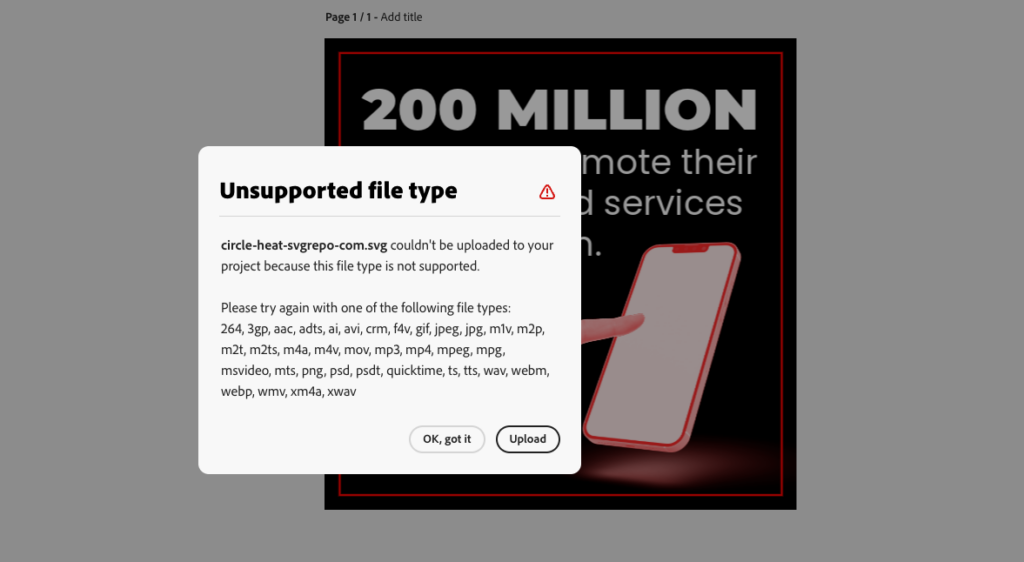Is This the Easiest 3D Design Tool? A Review of Womp

Design trends may come and go, but one style that has stuck around for the last few years is the use of 3D elements in designs. Whether through abstract shapes or inflated typography, countless content creators and brands have jumped on the 3D trend train.
While a worthy trend, 3D modeling has its challenges. The technical expertise, learning curve, and beefy computers required for 3D modeling can be rather intimidating. But what if there was a tool that could simplify the process and make 3D design accessible to everyone?
What is Womp?
Womp is a free, browser-based 3D modeling software that allows users of all skill levels to create 3D elements in an intuitive, user-friendly interface. Users can blend, mix, and deform shapes/text together to create stunningly rendered assets that can be used in graphic designs, 3D printing, animation, etc.

For content creators, Womp can be a game-changer. There are so many amazing features with this program that can add more dynamics to your content. After spending some time with the program and testing its features, we’re here to share our insights and help you decide if this tool is worth trying out (spoiler alert: it is). Let’s dive in!
User-Friendly Interface
For those who regularly use Canva or Adobe Express to create content, Womp’s main page will be a relieving breath of familiarity. The site is neatly set up so you can easily access your projects, discover projects submitted to the public community by other users, or access Womp’s helpful library of tutorials, tips, and guides.

The interface for the actual design workplace follows a structure similar to other programs, with different windows that let you manipulate layers, shapes, lighting, and other aspects of your design. Being a user-friendly program, the workplace is extremely simple to understand, save a few features that can be understood within minutes of experimenting.

Womp’s Creative Features
Making Shapes and Text
Starting out in a project is fairly simple in Womp. One of the first buttons you will see is the ‘objects’ button, which will give you a selection of shapes you can add to your workspace.

The first few minutes of moving objects around in your scene can feel a bit wonky. But after a few minutes of practice, the movement becomes more natural.

Text is also extremely easy to implement into your scene. Simply type out what you want, and then customize the font size, weight, or height like you would in any design program.
Unfortunately, font styles are rather limited, and a Womp Pro account is required to upload your own fonts.

Adding Effects to Shapes
There are dozens of ways to manipulate your design within Womp. As expected, there are sliders to change the position, rotation, and size of elements, but those just scratch the surface of what’s possible.
The real fun comes with experimenting with the material, lighting, and camera options. These features let you explore amazing presets and customizations that bring life and realism to your models. And thanks to Womp’s real-time rendering, users can see these designs come to life as they work on them.

Implementing Womp into Your Content
Now for the important question: How can social media marketers and creators implement Womp designs into their content?
One feature that we found super useful in Womp was the ability to upload a reference image. This allows you to upload any image from your computer to act as an overlay or guide while you are designing your 3D models.

Once you are pleased with how your model looks, implementing the final product into your content is as simple as exporting the 3D model and uploading it to your design!


A Quick List of Cons
While Womp can be an amazing tool for creators, the platform is not without its flaws. Here are some things to consider:
- Because Womp is a browser-based platform, a decent internet connection is required for it to run smoothly.
- Many of the features and presets require a Womp Pro account.
- Womp is still in beta, which means there are bugs every once and a while.
- There are a limited number of shape options available.
Conclusion
Womp is definitely not here to replace existing 3D modeling software. Instead, its purpose is to offer those interested in 3D modeling a fun and easy platform to experiment with. If you are a content creator, we definitely recommend checking out Womp and seeing how it can spice up your content!
Looking for more social media inspiration? Check out our blog, where we regularly share the latest and greatest in the field of social.


























